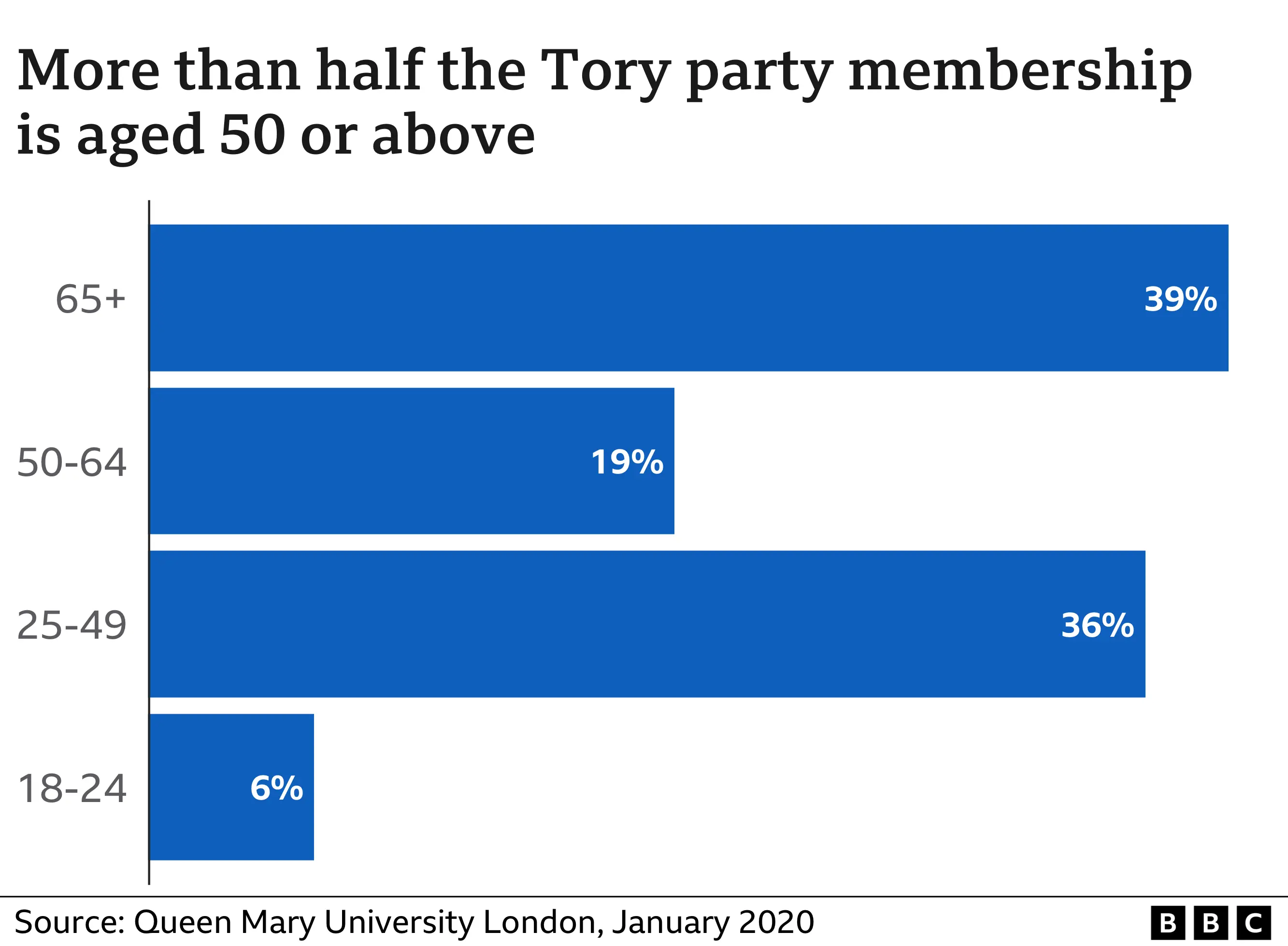Tory leadership: Who gets to choose the UK's next prime minister?
 Getty Images
Getty ImagesConservative MPs are currently battling it out to replace Boris Johnson as their leader and our next prime minister - but it is the party membership that will get the final say.
So who are they?
There won't be a general election when Boris Johnson stands down as prime minister, because the Conservative Party is already in power.
And so it falls to Tory party members to select the next PM in a postal ballot from a shortlist of two chosen by MPs.
We don't know exactly how many members the party has because they won't tell us, but it is over 160,000, or about 0.3% of the total UK electorate.
What is the average Tory member like?
Like members of the other major parties, Tories tend to be older, more middle class and more white than the rest of the population.
Professor Tim Bale, head of Queen Mary University of London and Sussex University Party Members Project, says: "The people who get to choose our next prime minister are far from being representative of voters as a whole.
"They're not as diverse ethnically; they're heavily concentrated in the south of England; there are significantly more men than women; they're generally better off; and, although they're not quite as elderly as some imagine (on average they're actually in their late 50s even if four-in-10 are over 65), they're still relatively old.
"In short, what political scientists call 'the selectorate' looks pretty different to the electorate."
According to the most recent research by Prof Bale's team, from January 2020:
- 63% of Conservative Party members are male, and 37% female
- 6% are under 24-years-old, 36% are aged 25 to 49-years-old, 19% are aged between 50 and 64-years-old, and 39% are over 65
- 24% backed Remain in the EU referendum, and 76% backed Leave
- 56% live in London and the south-east of England, 18% in the Midlands and Wales, 20% in the north of England and 6% in Scotland
- 80% belong to the highest social economic groups known as ABC1

Are Tory party members that different to those in other parties?
In 2017, the average age of Conservative party members was 57, Labour 53, Lib Dems 52 and SNP 54, according to Commons library research.
All the main parties have relatively few black and minority ethnic members. According to a 2018 report by Tim Bale's team, 97% of Conservative members were "white British", compared with 96% for Labour and the Liberal Democrats.
Labour is closer to gender parity than the other parties, and it has far more members overall than the Conservatives, even though the number has declined since Sir Keir Starmer took over as leader (as of July last year it stood at 440,000).
Most members of most parties in the UK are pretty middle-class, according to Prof Bale's research, but Conservative Party members are the most middle-class of all.
In marked contrast to Labour and the Lib Dems, nearly 40% of Conservative members earn more than the national average, and one in 20 earns more than £100,000 a year, which, says Tim Bale, is all the more striking because of how many Tories are of pensionable age.

So how many Tory members are there?
The Conservatives are the only major UK party to not routinely release membership figures.
A Conservative Party press officer said: "There were 160,000 eligible members during the previous leadership election. There will be more members this time."
This 2019 leadership election figure is a slight exaggeration, according to House of Commons library research, which said 159,320 Tory members were eligible to vote in that contest.
Amanda Milling, who was Tory chairwoman at the time, claimed in a March 2021 Daily Telegraph interview that party membership had topped 200,000, largely thanks to a dramatic rise in Wales, the north-east and south-west of England.
A lot has happened in British politics since then, not least the pandemic and the series of scandals, including a police fine for breaking his own lockdown laws, that led to the downfall of Boris Johnson.
Can I join up to get a vote?
It costs £25 a year to join the Conservative Party, although there are big discounts for members of the armed forces and those aged under 26.
But anyone hoping to sign up to get a say in who will be the next prime minister - or to make mischief with the process - is out of luck.
You have to have been a paid-up member for three months to take part in the leadership ballot, by which time a new occupant will be safely ensconced in Number 10.
